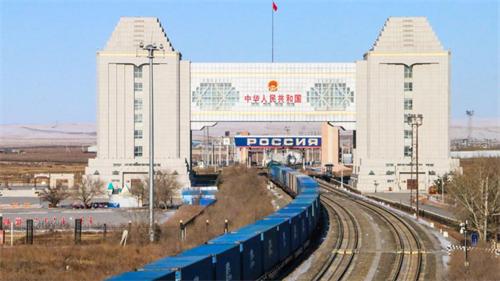Population Decline Dividend: Fewer Workers, Higher Wages?

For most of human history, a large population was seen as an advantage — a symbol of national prosperity, ample labor supply, and an expanding consumer market. However, the 21st century is witnessing an unprecedented shift: population decline. This is not merely a numerical reduction, but a fundamental reshaping of social structures, economic logic, and future development trajectories.
Population Decline: A Shared Global Destiny?
Over the past few decades, many developed nations have entered an era of low birth rates and severe population aging. In 2023, South Korea recorded only 270,000 births compared to 308,000 deaths, marking its first year of negative population growth. Some scholars even pessimistically predict that South Korea could become the first country to “disappear naturally.”
Sound exaggerated? Perhaps not. From Japan to Germany to the United States, deteriorating population structures are becoming more acute. Even China, a developing country not yet fully industrialized, is rapidly approaching the triple thresholds of low fertility, aging, and labor force contraction.
This is not an isolated phenomenon but a global trend. Several forecasts suggest that the global population will peak around 2065, after which a long-term decline will begin. This demographic turning point is not just a milestone in statistics; it will deeply impact resource allocation, consumption patterns, economic growth models, and even the balance of power between nations.
Is Population Decline Really a Disaster?
When population decline is mentioned, the immediate reaction is usually negative. Slower economic growth, shrinking consumer markets, labor shortages, and mounting pension burdens — all seem like looming crises. But could there also be hidden "dividends" in this shift?
On one hand, fewer people may ease resource pressure and increase per capita access. Cities may become less crowded, educational resources could be more evenly distributed, and the strain on healthcare, housing, and public services may be alleviated. On the other hand, to cope with labor shortages, technological innovation and automation often accelerate, driving industrial upgrades and promoting higher-quality development.
In fact, experiences from some countries show that a drop in total population doesn't immediately reduce the labor force. Since the decline in birth rates has been gradual, the decrease in the working-age population typically lags behind. This provides a time window in which policy interventions can offset negative impacts.
Fewer Workers, Higher Wages?
Now to the question that attracts the most public attention: if labor supply decreases, does that mean wages will rise? Is the long-awaited “springtime” finally arriving for workers?
In theory, supply and demand determine price. When labor supply contracts and demand remains steady, wages should naturally increase. But here’s the catch — demand is not constant. With rapid technological advances, artificial intelligence, robotics, and big data are gradually replacing traditional jobs. Many roles that once required human labor may no longer need people at all.
This leads to a paradox: declining populations do push up labor costs, but they also accelerate investment in labor-replacing technologies. As a result, while wages may rise, the scope and magnitude of these increases are limited and uneven.
Moreover, the impact varies greatly across industries and job types. High-skill jobs, which are harder to replace and in short supply, are more likely to enjoy significant wage growth. In contrast, low-skill, highly replaceable jobs may not see noticeable wage increases even amid labor shortages. In short, an individual’s irreplaceability is becoming a key factor in wage determination.
Wage Growth Under Pressure from Business Realities
Even with fewer workers, whether wages can actually rise depends on whether companies can afford to raise them. In a world of economic uncertainty and intense market competition, businesses need to invest their limited profits in upgrading technology, building brands, and expanding markets to ensure survival. If a company is already struggling, raising wages becomes unrealistic. For most employees, holding onto a stable job may be more practical than hoping for a major pay raise.
This also means the labor market will become more cutthroat. Not everyone has the bargaining power to demand higher wages — it depends on your ability to prove your value. Between replaceability and corporate capacity, wages are shaped by a dynamic game of negotiation.
Institutions and Talent: The Real Deciding Factors
Comparing different countries reveals that while demographics matter, they don’t determine everything. Although India’s population is expanding more rapidly than China’s, its economic development has not kept the same pace, highlighting that a large population alone does not guarantee economic strength. Germany and Italy both face aging populations, but Germany maintains much stronger economic vitality. This suggests that institutional design, education quality, and capital investment — the "soft power" factors — play a decisive role in responding to demographic challenges.
As Nobel laureate Paul Romer once said, “The population crisis is essentially a crisis of institutional innovation.” If institutions are rigid, education outdated, and workers unprepared for the new economy, even an existing demographic dividend may be squandered. Conversely, even in the face of population decline, a country that seizes the opportunities of technological and institutional transformation can still achieve growth.
What Kind of Population Outlook Do We Need?
Population can be both a driver of economic growth and a burden of structural adjustment. We should not view demographic changes simply as good or bad, but instead rationally analyze the underlying structural shifts, societal adaptability, and institutional readiness.
In an era of population decline, not all “less” is “worse,” and not all wage “increases” deserve celebration. We must move beyond demographic determinism and understand the deeper logic of economic development. The key is to shift from focusing on the quantity of labor to the quality of labor, and from seeking a demographic dividend to cultivating a talent dividend — that’s the real strategy for facing the future.



